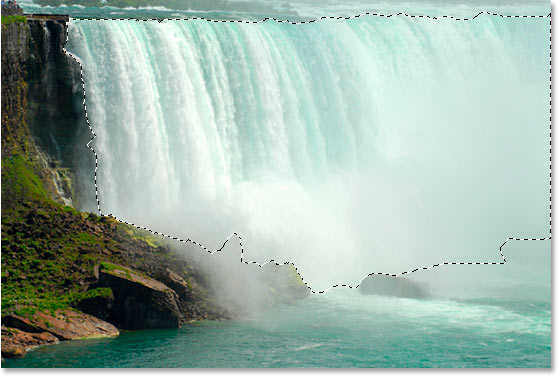Introduction:
In the vast landscape of digital photography and design, the strategic use of color can transform an ordinary image into a captivating visual narrative. Understanding how to add focus to an image with color in Photoshop is a skill that elevates your creative prowess, allowing you to guide the viewer’s attention and convey a nuanced story. This extensive guide will take you through the step-by-step process of harnessing the power of color to enhance focus, create emphasis, and infuse depth into your photographs.
Section 1: The Power of Color Psychology
Step 1: Understanding Color Meanings:
Before diving into Photoshop techniques, grasp the fundamentals of color psychology. Different colors evoke specific emotions and associations, and understanding these nuances will inform your decisions when adding focus to an image.
Step 2: Selecting a Dominant Color:
Identify the dominant color that aligns with the mood or message you want to convey. This color will serve as the focal point, drawing the viewer’s gaze and establishing a visual hierarchy within your image.
Section 2: Importing and Organizing Images
Step 1: Transferring Images to Photoshop:
Begin by transferring your selected images to your computer and organizing them in a dedicated folder. This organization ensures efficiency and ease of access during the editing process.
Step 2: Opening Images in Photoshop:
Launch Adobe Photoshop and open the image you intend to enhance. Utilize the “File” menu and select “Open” to bring the chosen image into the Photoshop workspace.
Section 3: Basic Adjustments in Adobe Camera Raw
Step 1: Accessing Adobe Camera Raw:
Make preliminary adjustments to your image using Adobe Camera Raw. This step includes tweaking exposure, contrast, and white balance to create a balanced starting point for the subsequent focus-enhancing color techniques.
Step 2: Enhancing Color Vibrancy:
Boost the vibrancy of colors in Adobe Camera Raw to ensure that your chosen dominant color stands out. Adjust the Vibrance slider to enhance overall color intensity without oversaturating the image.
Section 4: Isolating the Dominant Color
Step 1: Creating a Duplicate Layer:
Duplicate the original image layer to create a new working layer. This duplication serves as a non-destructive editing approach, allowing you to experiment with enhancing focus without altering the original image.
Step 2: Desaturating the Image:
Desaturate the duplicate layer by navigating to “Image” > “Adjustments” > “Desaturate.” This step converts the duplicate layer to black and white, preparing it for selective color enhancements.
Section 5: Selective Color Adjustments
Step 1: Applying Layer Masks:
Add a layer mask to the desaturated duplicate layer. Layer masks enable you to reveal specific areas of the original color image, allowing you to selectively apply color enhancements.
Step 2: Revealing the Dominant Color:
Using the layer mask, selectively reveal the dominant color in the areas you want to emphasize. This can be achieved by carefully painting over the layer mask with a soft brush, unveiling the vibrant color beneath.
Section 6: Enhancing Color Contrast
Step 1: Duplicating and Blending Layers:
Duplicate the original color image layer and set the blending mode to “Overlay” or “Soft Light.” This technique enhances color contrast, intensifying the presence of the dominant color in the image.
Step 2: Adjusting Opacity:
Fine-tune the impact of the duplicated and blended layer by adjusting its opacity. This step allows you to control the level of color contrast, ensuring a balanced and visually appealing result.
Section 7: Creating Color Gradients
Step 1: Adding Gradient Adjustment Layers:
Introduce gradient adjustment layers to enhance the transition of colors within the image. Use the Gradient Map adjustment layer to create smooth and gradual shifts in color tones.
Step 2: Adjusting Gradient Map Settings:
Experiment with different settings for the Gradient Map adjustment layer. Consider variations in opacity, blend modes, and gradient color combinations to achieve the desired focus-enhancing effect.
Section 8: Color Splash Techniques
Step 1: Selective Colorization:
For a dramatic effect, employ the color splash technique. Start by converting the image to black and white and then selectively restore specific colors to create emphasis. This technique is particularly impactful when applied to key elements within the image.
Step 2: Refining Selective Colorization:
Fine-tune the selective colorization by adjusting the saturation levels and blending modes of the restored colors. This step ensures a seamless integration of color emphasis without compromising the overall cohesiveness of the image.
Section 9: Advanced Techniques for Precision
Step 1: Utilizing Color Range Selections:
For precise control over color selections, use the Color Range tool. This tool allows you to make targeted selections based on specific color ranges within the image, facilitating meticulous focus enhancement.
Step 2: Refining with Adjustment Layers:
Refine your focus-enhancing color adjustments by incorporating adjustment layers such as Hue/Saturation, Color Balance, or Selective Color. These layers provide granular control over individual color channels, allowing you to fine-tune the impact of each hue.
Section 10: Adding Dimension with Shadows and Highlights
Step 1: Enhancing Shadows:
Amplify the impact of your focus-enhancing color by selectively enhancing shadows. Create a new layer, set the blending mode to “Multiply,” and use a soft brush to add subtle shadows, emphasizing the depth and dimension of the image.
Step 2: Illuminating Highlights:
Conversely, illuminate highlights to further enhance focus. Create another new layer, set the blending mode to “Screen,” and apply soft brush strokes to accentuate highlights. This step adds luminosity to key areas, drawing attention to the focal points.
Section 11: Final Touches and Global Adjustments
Step 1: Evaluating Overall Composition:
Step back and evaluate the overall composition of your image. Ensure that the focus-enhancing color adjustments contribute to a harmonious and balanced visual narrative.
Step 2: Global Adjustments for Cohesion:
Make any final global adjustments to overall color balance, contrast, or saturation. This step ensures that your focus-enhancing color enhancements seamlessly integrate with the broader color scheme of the image.
Section 12: Saving and Exporting
Step 1: Save Your Enhanced Image:
Once satisfied with your focus-enhancing color adjustments, save your work in a high-quality format such as PSD. This preserves layers and allows for future edits or refinements.
Step 2: Exporting for Different Platforms:
When ready to share your enhanced image, export it in suitable formats for various platforms. Consider the intended use, whether for print, web, or social media, to ensure the exported file retains the quality and impact of your focus-enhancing color adjustments.
Section 13: Troubleshooting Common Challenges
Challenge 1: Overemphasis or Saturation:
If certain areas are overly emphasized or saturated, revisit the layer masks and opacity settings to achieve a balanced distribution of focus-enhancing color.
Challenge 2: Inconsistent Color Blending:
Address inconsistencies in color blending by adjusting blending modes, opacity, or layer masks. Ensure a seamless transition between the enhanced color areas and the rest of the image.
Section 14: Showcasing Inspirational Examples
Example 1: Vibrant Portraiture:
Explore a portrait enhanced with focus-enhancing color, where the subject’s eyes or a specific element is emphasized to create a striking visual impact.
Example 2: Nature’s Color Symphony:
Witness a landscape photograph where key elements, such as flowers or a vibrant sunset, are accentuated with focus-enhancing color adjustments, enhancing the overall visual narrative.
Section 15: Advancing Skills in Color Enhancement
Step 1: Experimenting with Color Harmonies:
Expand your color enhancement skills by experimenting with different color harmonies. Explore complementary, analogous, or split-complementary color schemes to create diverse visual effects.
Step 2: Pushing the Boundaries of Creativity:
Challenge yourself to push the boundaries of creativity within focus-enhancing color adjustments. Experiment with unconventional color choices or explore the interplay of multiple dominant colors to create unique and impactful compositions.
Conclusion:
Adding focus to an image with color in Photoshop is a nuanced art that combines technical skill with creative intuition. This comprehensive guide has equipped you with the tools and techniques needed to transform your photographs into visually compelling narratives. As you embark on your journey of color-enhanced storytelling, let the strategic use of color become a powerful ally in guiding the viewer’s gaze and conveying the essence of your images. Embrace the artistry of color, embrace the mastery of focus – let your images speak with clarity and impact through the harmonious interplay of colors in the digital canvas of Photoshop.


